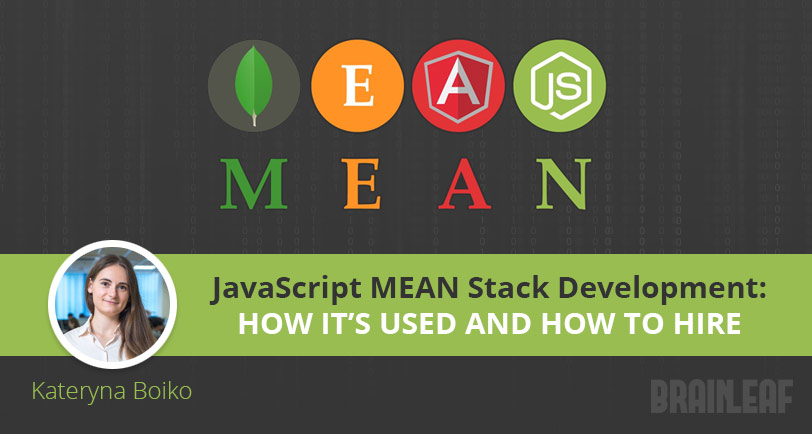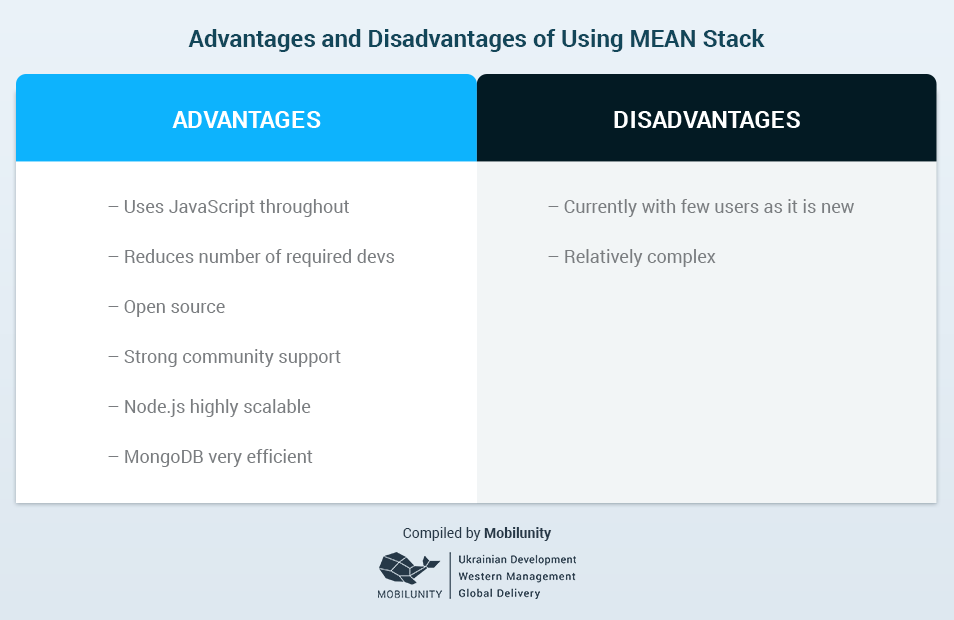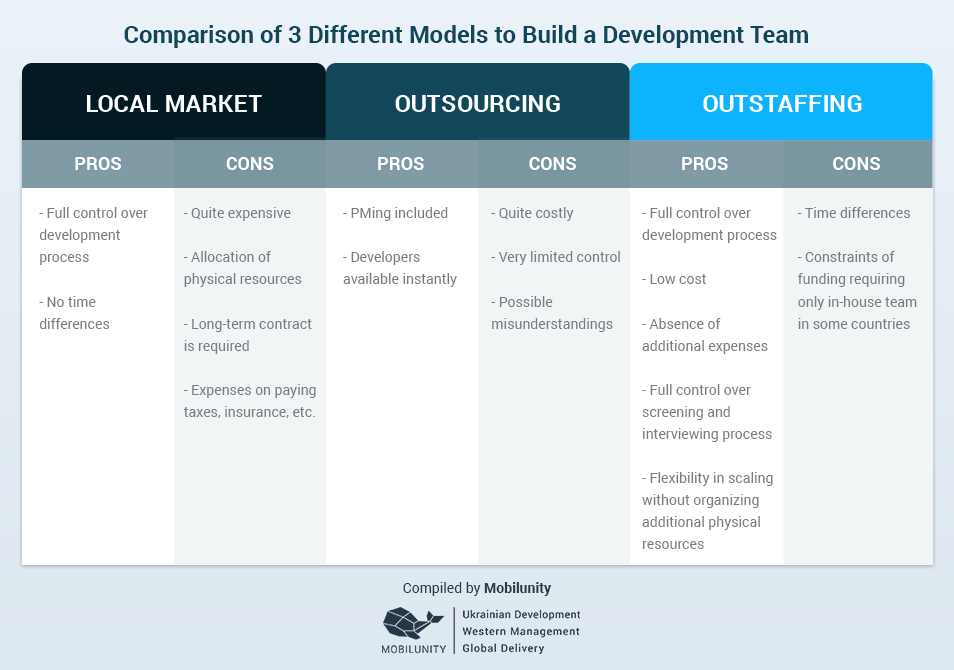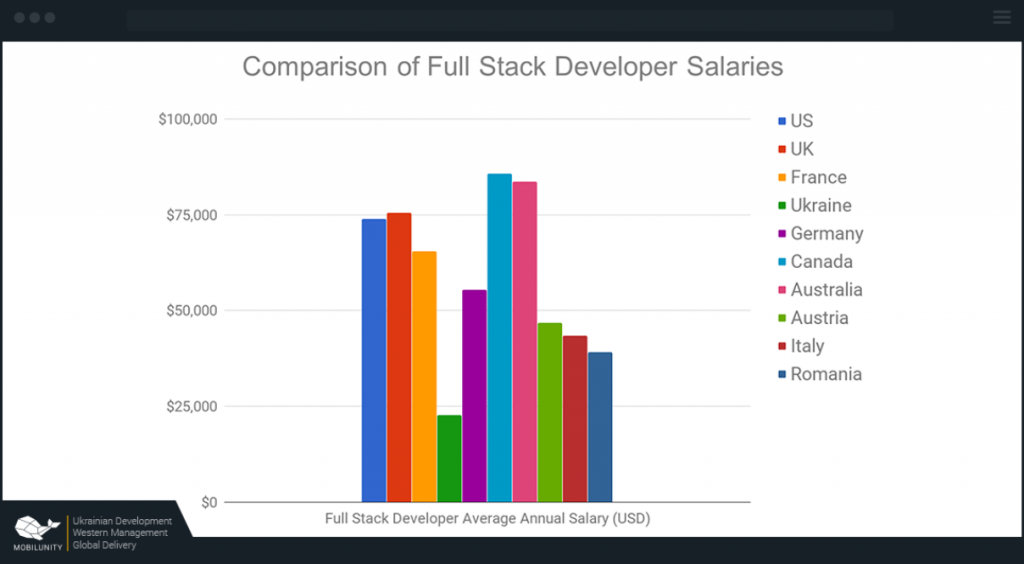
JavaScript MEAN Stack Development: How It’s Used and How to Hire
Continuous advancements in technology present ways to make our tasks more efficient, it is the best interest of every business to seize these opportunities. The world of web development used to be divided into two fundamental unit: frontend development, which resides on the client side and backend development, which resides on the server side. These tasks are gradually becoming easier to transcend, thanks to technologies that make the process a breeze.
Full stack development combines two units. This used to be quite difficult; a full stack developer had to master several programming languages that were dramatically different from each other, this is no longer the case. Now, several technology stacks that fuse together harmoniously to seamlessly connect the front-end and back-end departments.
Stack Types
Besides the MEAN stack, other commonly used stacks, include:
Due to unique features, this article will focus on JavaScript MEAN Stack. This technology stack is intriguing because the technologies at use are based on one fundamental language, JavaScript. Now, MEAN stack developers master one base language.
JavaScript MEAN Stack: A Closer Look
The name MEAN is actually an acronym that stands for the four technologies in the stack:
- MongoDB
- Express.js
- AngularJS
- Node.js
Let’s explore the advantages and disadvantages of using the JavaScript MEAN stack, in comparison the other common technology stacks.

Advantages
-
JavaScript
The biggest advantage to using MEAN full stack is that it uses JavaScript throughout, making it a JavaScript development stack. AngularJS, Node.js, and Express.js are all JavaScript-based technologies, while MongoDB handles data in the same form as does JavaScript: using JSON or JavaScript Object notation. Consequently, the same developer who has JavaScript expertise can develop an entire application using the full stack JavaScript framework, and transferring code to different layers becomes hassle-free. For example, the simple JavaScript code below will run in either AngularJS or Express.js:
Var N = 100;
For (i = 1; i <= N; i++){
console.log(“current number: ” + i)
}
Simple JavaScript code, which will run in both AngularJS and Express.js
-
Open-Source
A major advantage of this stack is that all of the technologies are open-source. Meaning their codes are available to all. This implies that the technologies get continuous support from the community of developers that use them when the original publishers stop supporting the particular program.
The individual technologies in the MEAN full stack offer their own advantages.
Since Node.js supports asynchronous programming, it can support running multiple independent processes that don’t have to wait for each other to finish. This gives your application the ability to scale up in support of a large number of users. Also, MongoDB is known for being very efficient at running queries, it can offer significant performance improvements to your applications.
Disadvantages
It’s Young
One of the biggest disadvantages of the MEAN stack is its age: it’s relatively new, only having been introduced in 2013. With MEAN stack being relatively new a lot of bigger companies have not transitioned into using it. However, this should not deter companies as every technology goes through this phase in its lifetime.
It’s Not Easy
Another possible disadvantage of MEAN stack is the technologies’ relative complexity compared to other technology stacks. It takes a highly skilled JavaScript developer to be able to quickly grasp AngularJS, Node.js, and Express.js; whereas for some other stacks, some basic skills of the technologies can get you started.
Build Your Team
You want to build a MEAN team for your project, but can’t decide where to start? Let’s explore some of the most common ways of hiring MEAN developers.

Local Market
Hiring from your local market would be a great way to find MEAN developer talent. You can find great developers by creating job postings on web-based platforms. Doing this would give your company access to an in house employee.
Easy Communication
When you can sit down with someone and talk to them face to face, it makes communication very straightforward. There’s a higher chance of getting things right the first time around if you have a local hire.
It Can Be Pricey
However, this method comes with some potential drawbacks. Developers don’t tend to be cheap, especially in countries with a high cost of living. Aside from having to pay a high salary, you will also have to pay for additional fees like government-imposed taxes and insurance. In addition, you will also have to dedicate physical resources like an office workstation with a computer to your employee, which could add up in cost.
Hiring a full-time developer could lead to a contract for long-term employment; therefore, you would not have the flexibility to scale your resources as your project requirements fluctuate.
With these, it may be worth looking at other options that may be more practical.
Outsourcing
With outsourcing, you delegate the completion of your entire project to an outsourcing company. Using this method you explain the full details of your project to the company and they will be the one responsible for seeing the project through to its completion.
The outsourcing company will provide developers and carry out project management; which will make your life a bit easier.
More Affordable
One immediate advantage to outsourcing is affordability. Many outsourcing companies come from countries that have a low cost of living, which translates to much lower developer salaries.
But don’t expect dirt cheap prices to get you outstanding work.
Even with extra services such as project management and business analysis, outsourcing tends to be cheaper than hiring from the local market in many countries. But remember, in general, you get what you pay for. Make sure your hire is experienced and qualified.
Less Control
Outsourcing leaves you with limited control over your project. It’s up to you to manage things. Although you can check up on the project’s progress; the bulk of the work lies in the outsourced hire’s hands. A good project manager is important in this case. Misunderstandings in project requirements can lead to dramatic mistakes, that may be costly to repair and cause delays in project completion.
Communication Difficulty
Time zone differences and language barriers may pose challenges with meetings and collaboration. Even if you’re contacting them at the right time of day, there is no guarantee that they will be responsive. If the responsiveness of your outsource hire is sub par upon initial contact, it rarely gets better over time.
Dedicated Team Model (Outstaffing)
One other option is outstaffing or dedicated development team model, wherein you hire a dedicated team of developers from an offshore development company. These developers will work for you full-time and report to you but remain in the offshoring company’s offices and use their office resources.
Cost Effective
Compared to outsourcing, this option tends to cost less because you won’t be paying for additional services like project management and business analysis. Payments for dedicated developers are all-inclusive, so you won’t have to pay for extra fees like taxes, insurance, software licenses, office resource use, etc.
More Control
Hiring dedicated developers gives you full control over your project, so you can closely monitor your developers and your project’s progress. For many projects seeking dedicated developers from an offshoring company can be the most practical method to hire MEAN JavaScript stack developers.
Again, Communication Can Be Tricky
One possible problem with offshoring, as with outsourcing, is time zone differences and language barriers. The selection of which country and company to hire from is of utmost importance.
Salary Comparison
Looking at the typical MEAN stack developer salary in different countries will help in choosing which country to hire dedicated developers from. As MEAN stack developers fall under the category of full stack developers, here are the full stack web developer salary in different countries, which we have compiled from different sources:
- US – $73,933 (source: PayScale)
- UK – £57,667 or $75,498 (source: Glassdoor)
- France – €57,000 or $65,363 (source: Glassdoor)
- Ukraine – $22,600 (source: Angel.co)
- Germany – €48,333 or $55,411 (source: Glassdoor)
- Canada – 108,110 CAD or $85,666 (source: Neuvoo)
- Australia – 105,423 AUD or $83,671 (source: Neuvoo)
- Austria – €40,483 or $46,783 (source: Neuvoo)
- Italy – €37,584 or $43,438 (source: Neuvoo)
- Romania – $39,167 (source: Angel.co)

Evidently, Ukraine offers far lower rates for full stack developers than most other countries, so hiring dedicated developers from Ukraine may be the most economical choice.
You don’t have to learn the hard way! Learn how to avoid the top mistakes in web and app development in less than 7 minutes.
 Kateryna Boiko works as Business Unit Director at Mobilunity, which is a Ukrainian provider of remote development teams. She has over 6 years of experience in IT industry and has managed more than 400 development and design projects of the clients. Being one of the key people at Mobilunity and having worked with clients from more than 20 countries, Kateryna understands not only business needs of the clients, but also their cultural and local expectations. Her main goal is to help clients’ businesses grow naturally with the help of offshore development services and get the services they are looking for.
Kateryna Boiko works as Business Unit Director at Mobilunity, which is a Ukrainian provider of remote development teams. She has over 6 years of experience in IT industry and has managed more than 400 development and design projects of the clients. Being one of the key people at Mobilunity and having worked with clients from more than 20 countries, Kateryna understands not only business needs of the clients, but also their cultural and local expectations. Her main goal is to help clients’ businesses grow naturally with the help of offshore development services and get the services they are looking for.
Kateryna is goal-oriented team player, very passionate about technologies, likes travelling, researching, and experimenting in sales and marketing.





